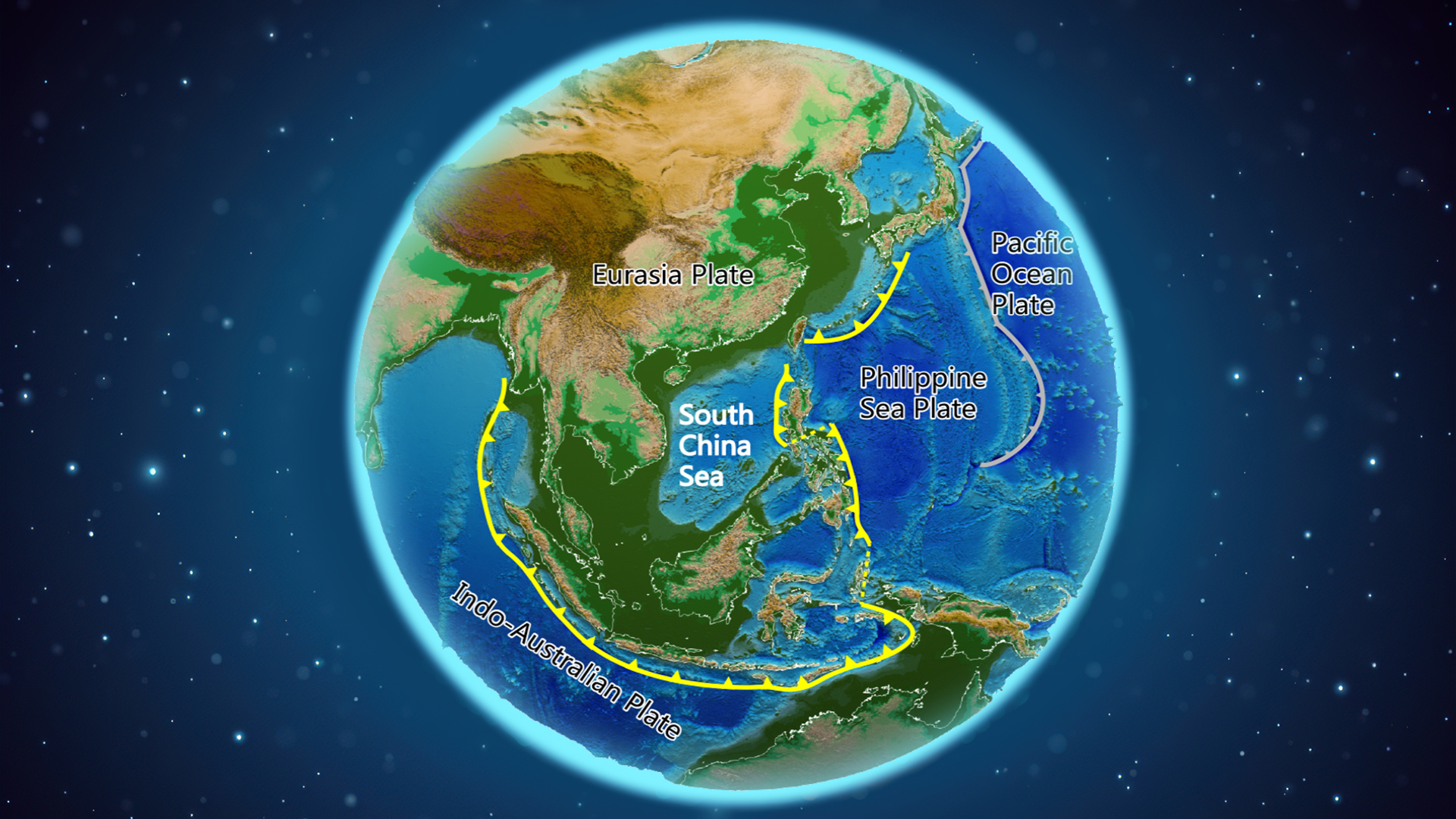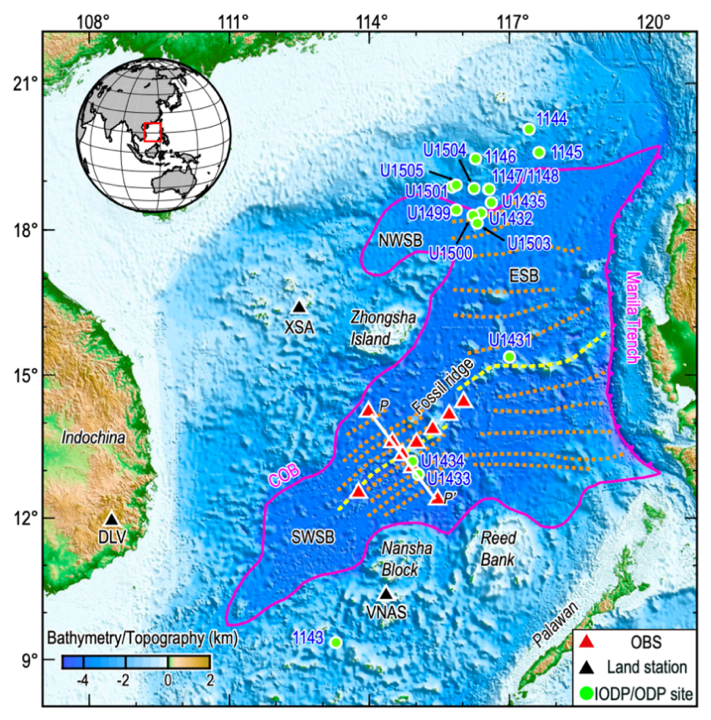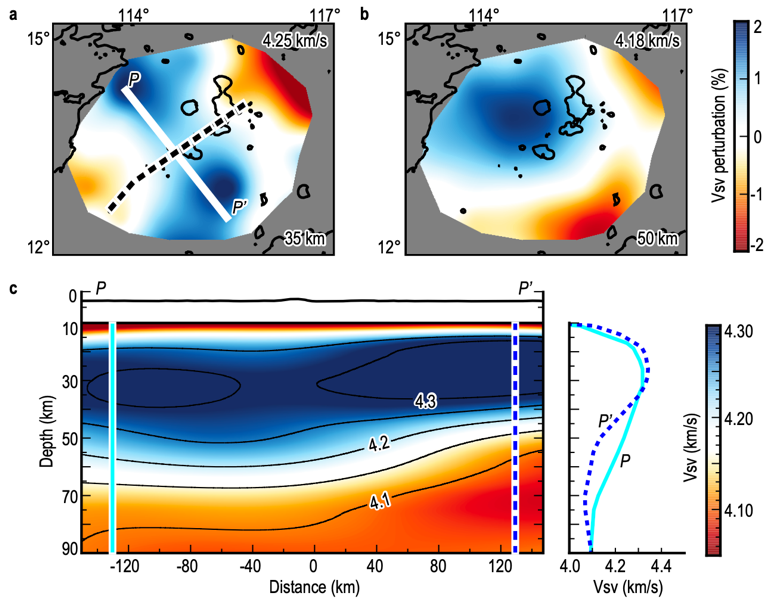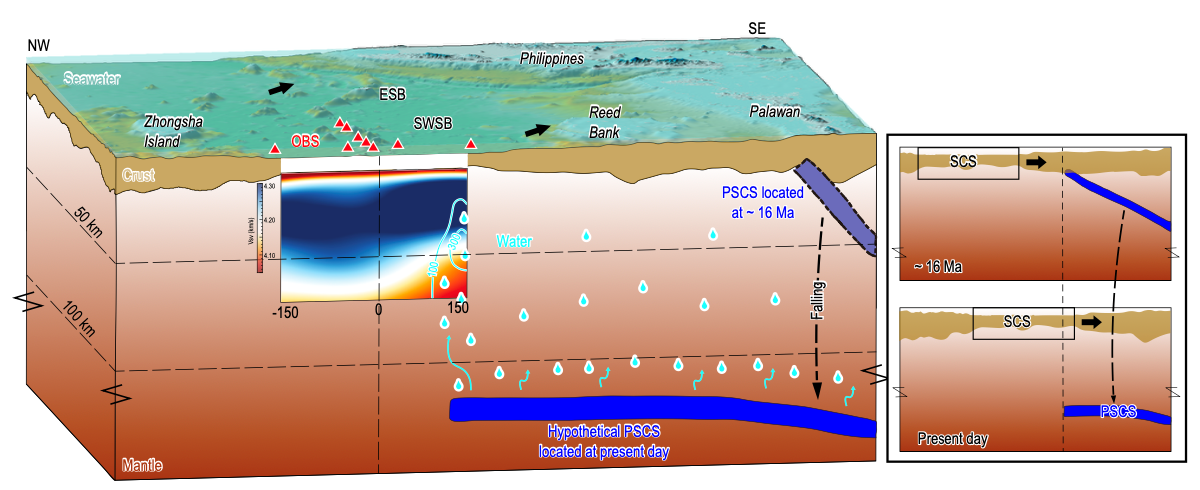The South China Sea (SCS) is one of the largest marginal seas in the world. For nearly 100 million years, a large number of earth slabs have subducted under the SCS from the eastern, western, and southern directions. Therefore, the deep structure of the SCS is also called the “Underground Palace” of subducted slabs. However, due to the limitations of observations, the deep structure of this “Underground Palace” has been poorly understood.

Professor Jian Lin’s research group from the Department of Ocean Science and Engineering at the Southern University of Science and Technology (SUSTech) recently conducted a high-resolution broadband ocean bottom seismometer (OBS) experiment near the fossil ridge in the southwestern sub-basin of the SCS (SWSB) (Figure 1), revealing high-resolution, three-dimensional “CT” images of the “Underground Palace” in the SWSB.
The paper, entitled “Mantle heterogeneity caused by trapped water in the Southwest Basin of the South China Sea”, was published in Nature Communications, one of the world’s top academic journals.

Figure 1. Bathymetry map of the study region with major tectonic features shown
At depths below 40 km in the mantle, the seismic shear-wave velocity beneath the northern side of the SWSB is similar to that of the conventional oceanic pyrolite mantle, but roughly 3% shear-velocity reduction was found beneath the southern side of the SWSB (Figure 2).

Figure 2. Mantle shear-velocity models of the southwestern sub-basin of the South China Sea: Lateral variations (top panels) and vertical variations (bottom panels)
Results of thermal dynamic modeling reveal that the observed significant shear-velocity reduction could be explained by the presence of 150–300 ppm of water and 5–10% of lower continental crust (LCC). The inferred high-water content at the southern side of the SWSB is consistent with a model in which the Proto-SCS plate subducted southward prior to and during the formation of the SCS basin, releasing water into the upper mantle of the SWSB.

Figure 3. A conceptual cartoon for the evolution of the SWSB
Combined with the present structure of the SCS, the research team proposed a new model of the upper mantle evolution beneath the SWSB (Figure 3). When the SWSB began to spread, the underlying mantle was contaminated by the LCC due to crustal delamination. Since the SCS spreading stopped, a significant amount of water might have been released from the sinking Proto-SCS plate slab, causing a relatively high water content (~150–300 ppm) beneath the southern end of the SWSB.
This study is of major significance in revealing the “Underground Palace” structure of the subducting slab in the SCS, the origin of a large number of volcanoes and islands in the SCS, and the water cycle in the Earth’s subduction zone.
Jinyu Tian, a postdoctoral researcher of the Department of Ocean Science and Engineering at SUSTech, is the first author of this paper. Prof. Jian Lin is the corresponding author, and SUSTech is the first affiliation.
This work was supported by the National Natural Science Foundation of China (NSFC).
Paper link: https://doi.org/10.1038/s41467-023-38385-w
To read all stories about SUSTech science, subscribe to the monthly SUSTech Newsletter.
Proofread ByAdrian Cremin, Yingying XIA
Photo By